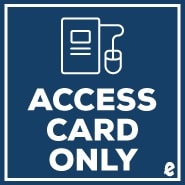NOTE: Before purchasing, check with your instructor to ensure you select the correct ISBN. Several versions of Pearson's products exist for each title, and registrations are not transferable. In addition to the access card included in this package, you will need a course invite link, provided by your instructor, to register for and use Revel™.
Used books, rentals, and purchases made outside of Pearson
If purchasing or renting from companies other than Pearson, the access code for Revel may not be included, may be incorrect, or may be previously redeemed. Check with the seller before completing your purchase.
This package includes the Revel access card and loose-leaf version.
A practical and applied K-8 reading methods book with a focus on new literacies and developmental, cultural, and linguistic diversities.
Written by one of the most dynamic author teams in the field of reading and literacy, Revel for All Children Read, Fifth Edition, continues to offer K-8 teachers the best practices for developing reading and writing in all students. As with earlier editions, six critical themes are interwoven throughout: the struggling reader; family/community literacy; new literacies; writing and reading connections; developmental, cultural, and linguistic diversity; and phonics/phonological awareness. The fifth edition further integrates Common Core State Standards and Response to Intervention (RTI), includes separate chapters on teaching reading fluency and vocabulary, emphasizes the teaching of English Learners, and equips teachers-in-training with the foundational knowledge they will need for their professional qualifying examinations. This focus on contemporary and critical learning prepares future teachers for the demands of helping all students succeed in the classroom.
Revel is Pearson’s newest way of delivering our respected content. Fully digital and highly engaging, Revel replaces the textbook and gives students everything they need for the course. Informed by extensive research on how people read, think, and learn, Revel is an interactive learning environment that enables students to read, practice, and study in one continuous experience—for less than the cost of a traditional textbook.
0134515498 / 9780134515496 All Children Read: Teaching for Literacy in Today's Diverse Classrooms, with Revel -- Access Card Package
Package consists of:
-
013451596X / 9780134515960 All Children Read: Teaching for Literacy in Today's Diverse Classrooms, Loose-Leaf Version
-
0134515978 / 9780134515977 Revel All Children Read: Teaching for Literacy in Today's Diverse Classrooms -- Access Card








